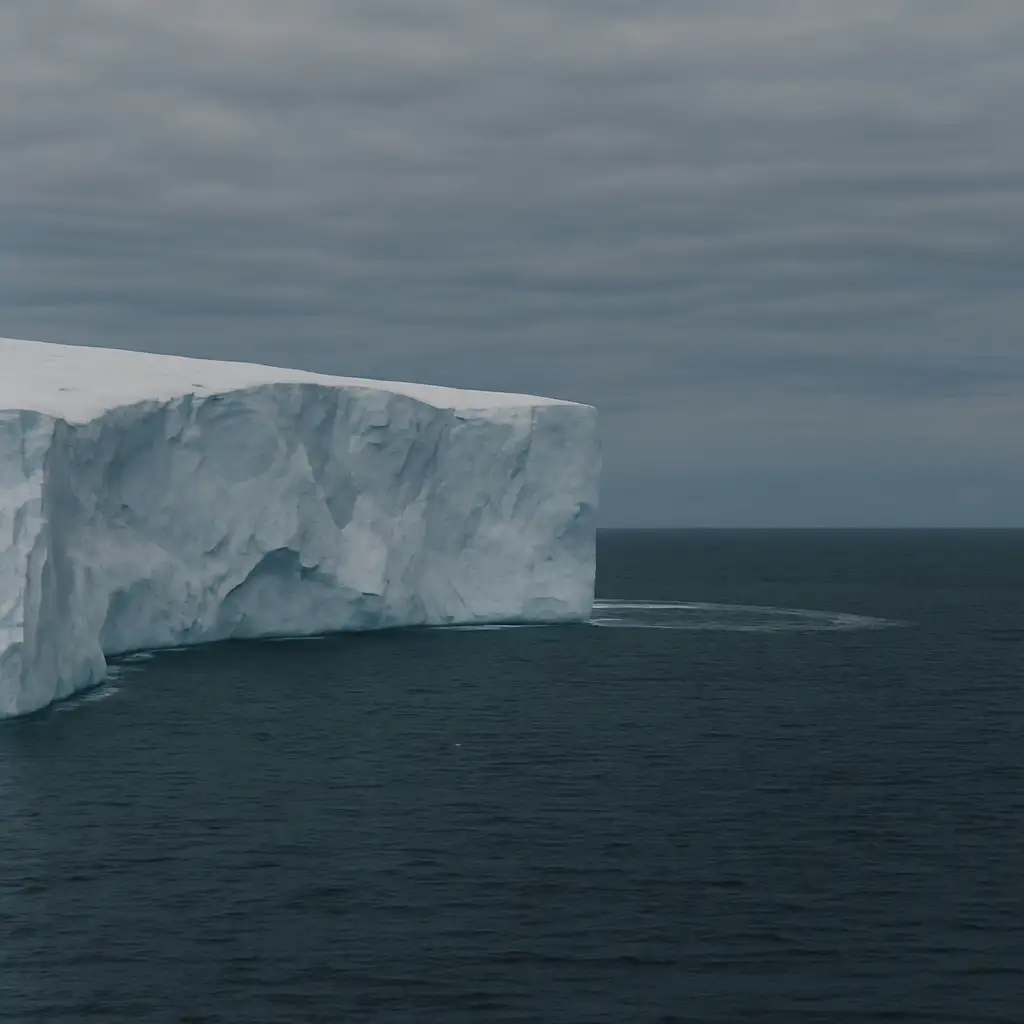Antarctic Ice Sheet Is Nearing a Dangerous Point of No Return

A growing body of scientific research suggests the Antarctic Ice Sheet may be much closer to irreversible collapse than previously thought. A new study published in Communications Earth & Environment reveals that with only a small amount of additional ocean warming, large sections of the West Antarctic Ice Sheet (WAIS) could begin retreating permanently, pushing global sea levels upward by several metres. This stark warning, drawn from the distant past, suggests that today’s climate trajectory may already be too close to a tipping point.
The study, led by a team of climate scientists from Norway, Germany, and the UK, used advanced modelling to simulate Antarctica’s response to climate shifts over the past 800,000 years. This period spans eight glacial and interglacial cycles, offering a deep-time view of how the ice sheet has historically responded to warming and cooling. The results show that relatively small changes in ocean temperature can trigger large and potentially irreversible losses of ice, especially in the marine-based sectors of West Antarctica.
The modelling showed that a rise in ocean temperature of just 0.25 degrees Celsius above present levels could tip the WAIS into long-term retreat. Alarmingly, the current ocean temperatures are already approaching, or may have already crossed, this threshold. In two of the three model scenarios run by the researchers, the ice sheet began to collapse under today’s climate conditions. This collapse, once initiated, could continue for centuries or even millennia, regardless of whether future warming is curbed.
The researchers used the Parallel Ice Sheet Model (PISM), a powerful tool for simulating how ice sheets evolve over long timescales. They combined transient simulations, which show how the ice sheet responds to changing climate over time, with equilibrium simulations, which show how the ice would settle if climate conditions remained constant. Together, these approaches allowed the scientists to identify clear temperature thresholds that signal the beginning of large-scale, and possibly unstoppable, ice loss.
A central finding of the study is the presence of what scientists call hysteresis. In this context, it means that once the ice sheet begins to collapse, returning temperatures to pre-warming levels does not necessarily reverse the process. Recovery of the ice sheet would require a much colder ocean than what triggered the initial retreat. This insight adds urgency to the conversation about climate targets, as it suggests that even modest warming can lock in future sea-level rise.
The focus on West Antarctica is not accidental. Much of the WAIS is grounded below sea level, making it particularly susceptible to marine ice sheet instability. This process begins when warm ocean water undercuts ice shelves, thinning them from below and allowing inland ice to flow more quickly into the ocean. Once triggered, this chain reaction can lead to the loss of entire ice basins. The study identified the Amundsen and Weddell Sea sectors as the most vulnerable areas, and the likely starting points of such tipping events.
In contrast, East Antarctica appears far more stable. Despite extensive modelling over all eight glacial cycles, there was no evidence of major retreat in the marine-based sectors of the East Antarctic Ice Sheet. Even during past warm periods that were hotter than present-day, the eastern portion of the ice sheet remained largely intact. This supports the idea that West Antarctica poses the most immediate risk for triggering abrupt and lasting sea-level rise.
One of the most troubling conclusions of the study is that we may already be living in what scientists refer to as an “overshoot scenario.” This means the world has already crossed a temperature threshold that begins to destabilize the WAIS, but not long enough or hot enough yet to trigger its full retreat. The danger here is that the early signs of collapse may not be immediately visible, allowing for a false sense of security. By the time the effects become obvious, it could be far too late to prevent them.
A collapse of the WAIS would eventually lead to more than four metres of global sea-level rise. Even partial loss could drastically reshape coastlines and flood major cities worldwide, with profound economic and humanitarian consequences. Coastal communities in both developing and developed nations would face enormous challenges in adaptation, with low-lying areas becoming increasingly uninhabitable.
The implications of this research also raise critical questions about the adequacy of current climate targets. International agreements like the Paris Agreement aim to limit global warming to 1.5 or 2 degrees Celsius above pre-industrial levels. However, if ocean warming of just 0.25 degrees beyond today’s average is enough to destabilize the Antarctic Ice Sheet, then these goals may not offer enough protection against irreversible changes in the cryosphere.
The authors of the study emphasize the need for better reconstructions of past ocean temperatures and more comprehensive Earth system models that can simulate the feedbacks between ice, oceans, and atmosphere. Improved understanding of these dynamics is essential for predicting how long the current window of opportunity will remain open, and how close we truly are to crossing irreversible thresholds.
This research underscores the urgency of acting now to limit further warming. The tipping points identified in Antarctica are not projections for the distant future; they are warning signs rooted in the Earth’s deep past. The choices made today—on emissions, energy use, and global cooperation—will determine whether the ice remains or melts. We are no longer guessing if a collapse is possible. We are now confronting the reality that it may already be starting.
